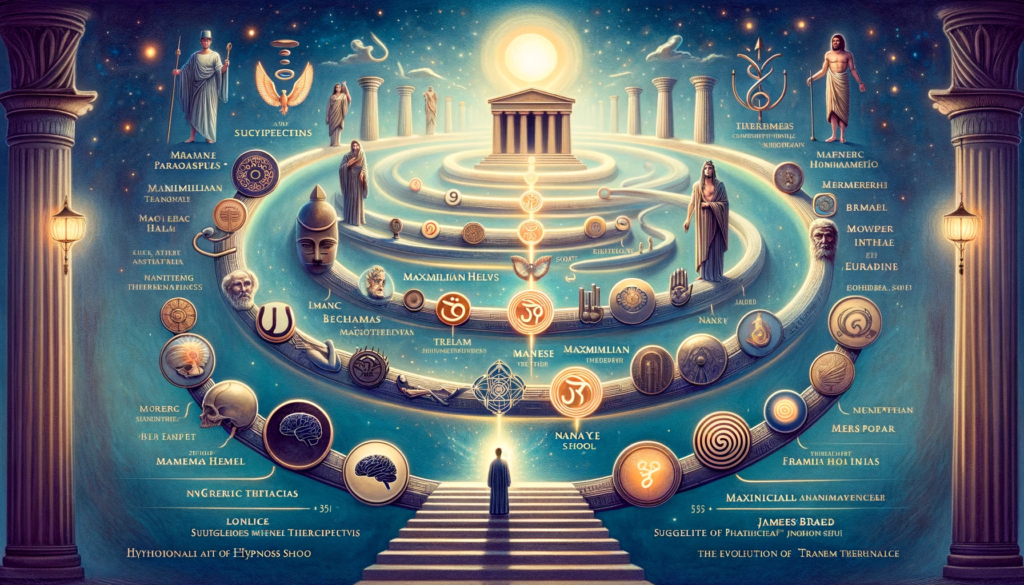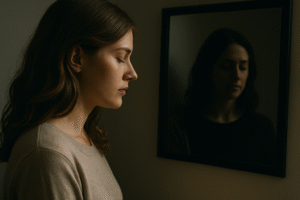Many myths and misconceptions still linger around the practice of hypnosis. Despite scientific research and wide use, people still stigmatize hypnosis as charlatanry and esoteric mysticism. Some people even believe it to be an innovation of the New Age movement! Needless to say, history would tell us otherwise. The timeline of hypnosis runs through the history of the human race far deeper than we could ever imagine.
As far as we know, Egyptian physician-priests were the first to use hypnosis. As did the Romans, Greeks, and ancient Hebrews. ..among others. It’s been used in the USA since the mid-1800s by Freud, Pierre Janet, and Alfred Binet among others. This particular installment of hypnotic news seeks to explore the history of hypnosis from its ancient roots to its modern advances.
Ancient Civilizations
The origins of hypnosis are nearly indistinguishable from those of western medicine and psychology. The Sumerians, Persians, Chinese, Indian, Egyptian, Greek, and Roman peoples all used hypnosis in some shape or form. Starting with sleep temples lets take a look at what ancient hypnosis looked like.
Egypt, Greece, and India
In ancient cultures, the sick when to healing places. This is our first stop in the timeline. The sleep and dream temples of the ancient world were prevalent around the ancient world. The method of healing you may ask? Well, we know that at least part of it involved hypnosis. We know this from a variety of texts. For example, the Law of Manu, a Sanskrit book from India, describes different levels of hypnosis. Other evidence of ancient hypnosis for healing comes from the Egyptian Ebers Papyrus from 1550 BC.
Egypt
As you can see the use of suggestion as therapy goes back much further than Mesmer, who we commonly call the father of hypnosis. However, it appears more likely to say that was Imhotep. Existent writings trace hypnosis and suggestion therapy back over 4000 years to ancient Egypt. The Egyptians used healing sanctuaries to treat both mental and physical ailments. People were placed into a trance-like sleep to dream. Afterward the clergy (both male and female) interpreted the dreams to gain knowledge about what ailed them.
The earliest of these dates from the time of Imhotep and the temples dedicated to him. A physician and priest (among other things), Imhotep served Pharaoh Zoser (2650 – 2590 B.C.). History suggests that Imhotep’s step pyramid was the first of the pyramids. The sleep temples were used as a psychotherapeutic tool and were well attended by the population. The temple used religious and psychological interventions to psychologically prepare the ill for suggestion therapy. These shrines still exist in some parts of the world today. Particularly in the Middle East and Africa. Many times people would come to cast out their demons.
Magnets and Hypnosis
Before hypnosis was well understood the terms Mangetisim and mesmerism were often used to describe these healing phenomena. From the “Royal Touch” to magnets for healing, hypnosis thrived in the middle ages for many centuries under various names and titles.
Paracelsus (Swiss physician 1493-1541) was the first to use magnets for healing. This in place of divine touch or a holy relic as had been used in the past. Surprisingly enough this method was still prevalent well into the 18th century. We know this due to the tales of a Jesuit priest, Maximillian Hell, of Vienna. He became famous for healing by using magnetized steel plates over the body.
Franz Mesmer
In fact, Franz Mesmer one of the founders of our modern-day knowledge of hypnosis was one of his students. During his practice he quickly discovered that it was not the magnets but the state his teacher had put his subjects in. it did not take him long to figure out how to induce that state without magnets. He did however, incorrectly assume that the power must come from himself or some invisible fluid occupying the same space. Despite that error, his discovery was the first leap towards modern hypnosis.
Priest Research Hypnosis
In 1813 Abbe Faria, an Indo-Portuguese priest conducted research on hypnosis in India. Eventually, he would return to study hypnosis with one of Mesmer’s students Puysegur. It would be Faria who finally proposed that the power of hypnosis came not from the hypnotist, but from within the mind of the subject. This would become the basis for the French school of hypnosis.
The Nancy School (or school of suggestion), started the trend of formal hypnosis education. It was founded by Ambroise-Auguste Liebeault, a French country doctor who is considered to be the father of modern hypnotherapy. They believed that hypnosis acted as a natural phenomenon induced by suggestion. There they began the first studies into the difference between sleep and trance. His book in 1866 would attract physicians including Hippolyte Bernheim.
Bernheim (1840-1919) was a renowned neurologist. While initially skeptical, a demonstration by Lieubault amazed him so much that he abandoned his practice to become a hypnotherapist. Bernheim was the first to share the wonders of hypnosis with the medical world in his own book, Suggestive Therapeutics. It would be this book that would cause hypnosis to emerge as a scientific subject.
Psychology Pioneers & Hypnosis
In the near modern end of our timeline, many pioneers of psychology studied at the Nancy School. Pierre Janet (1859-1947) studied at both the Nancy school and its rival Charcot in Paris. Freud also studied with Charcot and later observed both Bernheim and Liebault. And Freud began practicing hypnosis in 1887. In fact, hypnosis was crucial to his invention of psychoanalysis.
Hypnotic Anesthesia
The first known use of hypnosis for scientific purposes saw it developed as a tool for anesthesia. In 1821 Recamier performed the first major operation using hypnosis for anesthesia. Elliotson (1834), who introduced the stethoscope to England, used it in his surgical practice as well. And James Esdaile, a renowned hypnotist, performed over 2,000 minor and 345 major operations using hypnosis in the 1840s-50s
Modern Hypnotism
There is way too much to cover in the modern timeline of hypnosis. However, modern hypnotism is where we begin to see hypnosis begin to get the recognition it deserves. The research required to prove its efficacy to even the sternest skeptic. And it all starts with James Braid.
James Braid, a Scottish ophthalmologist, is the father of modern hypnotism. It was Braid who coined the term. in 1841 he had scoffed at the ideas of Mesmerists and was the first to suggest that hypnosis was psychological. Braid is perhaps the first practitioner of psychosomatic medicine. He even attempted to rename hypnosis once he discovered it was not sleep at all. He wanted to rename it monoideaism (or focus on one idea). But the term hypnosis had already been in use for too long and remains the term used today.
Hypnosis Thrives
Hypnosis, around for thousands of years, has been used to treat a variety of symptoms and maladies. Throughout the timeline of the human race. Before we even had words or explanations it was a tool for healing and change. Many other men and women have pioneered this field. And continue to do so.
There are many more men and women whom the world deserves to know about. Andrew Salter, Melissa Teirs, Mark Cunningham, and Mike Mandel, just to name a few. All continuing to teach. All the researchers and neurologists discovering more and more about this process every day. It is simply amazing.
Next Time
In America, the use of hypnosis for the rapid treatment of trauma was prevalent all through WWI, WWII, and the Korean. It caused a boom in research as we learned more and more ways to use it to help our wounded soldiers. Particularly in the fields of dentistry and psychiatry. Part 2 will look at the timeline of hypnosis in America.



